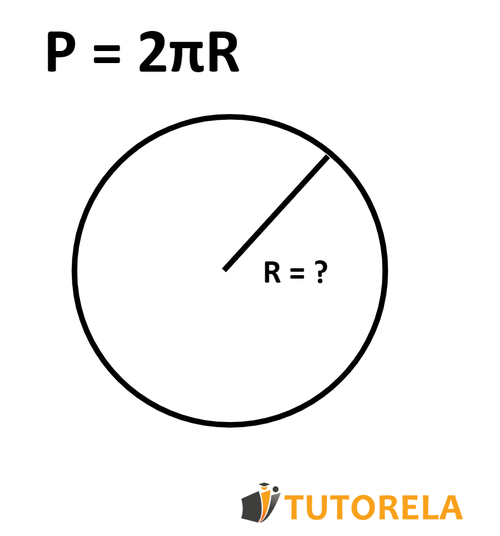Some of you may know the radius as a "dial". Either way, the meaning is identical with the same characteristics. So, what is the radius? It is a specific segment that connects the center of a circle with a particular point on the circumference .
Circumference Practice Problems: Calculate Radius & Perimeter
Master circumference calculations with step-by-step practice problems. Learn to find radius from perimeter using the formula P=2πR through guided examples and exercises.
- Calculate radius from given circumference using the formula P=2πR
- Solve real-world problems involving circular paths and running tracks
- Find circumference when radius or diameter is provided
- Apply circumference formulas to complex geometric shapes with semicircles
- Convert between different units in circumference problems
- Determine area of circles using circumference information
Understanding How is the radius calculated using its circumference?
How is the radius calculated using its perimeter?
The formula for calculating the perimeter or circumference of a circle is:
Where is the perimeter of the circle, is the radius of the circle, and is a number approximately equal to .
Given: A circle with a circumference of . The radius of the circle needs to be calculated.
We will place the known data into the formula:
The perimeter can be translated in terms of , that is:
Then we obtain:
Reduce the value of and get . Continue with a division by to isolate the value of .
That is: and, therefore, the result obtained is that the radius of the circle .

Practice How is the radius calculated using its circumference?
\( r=\frac{1}{3} \)
Calculate the circumference.
Examples with solutions for How is the radius calculated using its circumference?
O is the center of the circle in the diagram.
What is its perimeter?
To solve this problem, we will determine the circumference of the circle:
- Step 1: Identify the radius, . From the diagram, the number is provided, suggesting that cm.
- Step 2: Use the circumference formula for a circle: .
- Step 3: Substitute the radius into the formula: cm.
Therefore, the circumference of the circle is cm. This aligns with choice 3 from the provided options.
The correct and verified circumference is cm.
Answer:
cm
Calculate the circumference.
To solve the problem of finding the circumference of a circle with radius , we will follow these steps:
- Step 1: Identify the given value of the radius.
- Step 2: Apply the formula for the circumference of a circle.
- Step 3: Calculate the result using known values.
Let's go through these steps in detail:
Step 1: The radius is given as .
Step 2: The formula for the circumference of a circle is .
Step 3: Substitute the given radius into the formula:
Using the value of , we can calculate:
Therefore, the circumference of the circle is approximately .
Answer:
43.982
Calculate the circumference.
To solve this problem, follow these steps:
- Step 1: Given that the radius .
- Step 2: Use the formula for the circumference of a circle, .
- Step 3: Substitute the radius into the formula: .
- Step 4: Calculate the expression: .
- Step 5: Approximate to find .
- Step 6: Perform the multiplication: .
- Step 7: Round off the number to three decimal places: .
The correct answer matches the choice labeled 2: 37.699.
Answer:
37.699
Calculate the circumference.
To solve this problem, we'll follow these steps:
- Step 1: Identify the given information
- Step 2: Apply the appropriate formula
- Step 3: Perform the necessary calculations
Now, let's work through each step:
Step 1: The problem provides the radius of the circle as .
Step 2: We'll use the formula for the circumference of a circle: .
Step 3: Plugging in the value of the radius, , into the formula, we get:
.
Using approximately , we calculate:
.
Therefore, the circumference of the circle is approximately 69.115.
Upon comparing this with the given choices, the correct choice is:
Choice 4:
69.115
Answer:
69.115
Look at the circle in the figure:
Its radius is equal to 4.
What is its circumference?
The formula for the circumference is equal to:
Answer:
8π